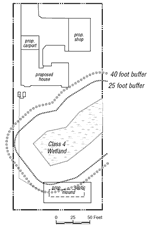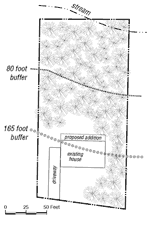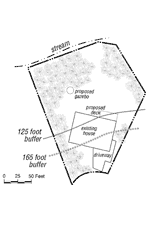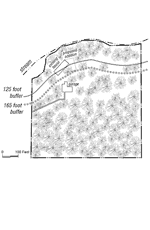Example plans compared to standard critical areas requirements

Planning can help you protect resources and reach your goals
These comparisons illustrate how a rural stewardship plan can be beneficial to a landowner and their objectives. To get a better idea of how a plan would work on your property, you can attend a workshop or get help from county staff.
The standard critical areas requirements allow some flexibility to help you fit your development plans around the critical areas and buffers on your property. In many cases, the outcome would be similar to rural stewardship planning, but mitigation requirements would be less flexible.
Rural Stewardship Planning will not offer the same benefits to all properties. If you are clearing or developing your property, reductions in buffers or clearing limits will vary depending on the property. In areas with higher quality habitat, stream buffers usually cannot be reduced as much.
Select one of the examples to see the details.

Example 1: Property with a class 4 wetland (currently in meadow)

Example 2: Wooded property on a Type S ("Shorelines" category) stream with impaired streamside habitat

Example 3: Wooded property on a Type S ("Shorelines" category) stream with impaired streamside habitat

Example 4: Wooded parcel on a Type F (fish-bearing) stream with house inside the buffer
For questions about these programs, please contact Pesha Klein, Environmental Scientist III, DPER Critical Areas Review.

 Translate
Translate